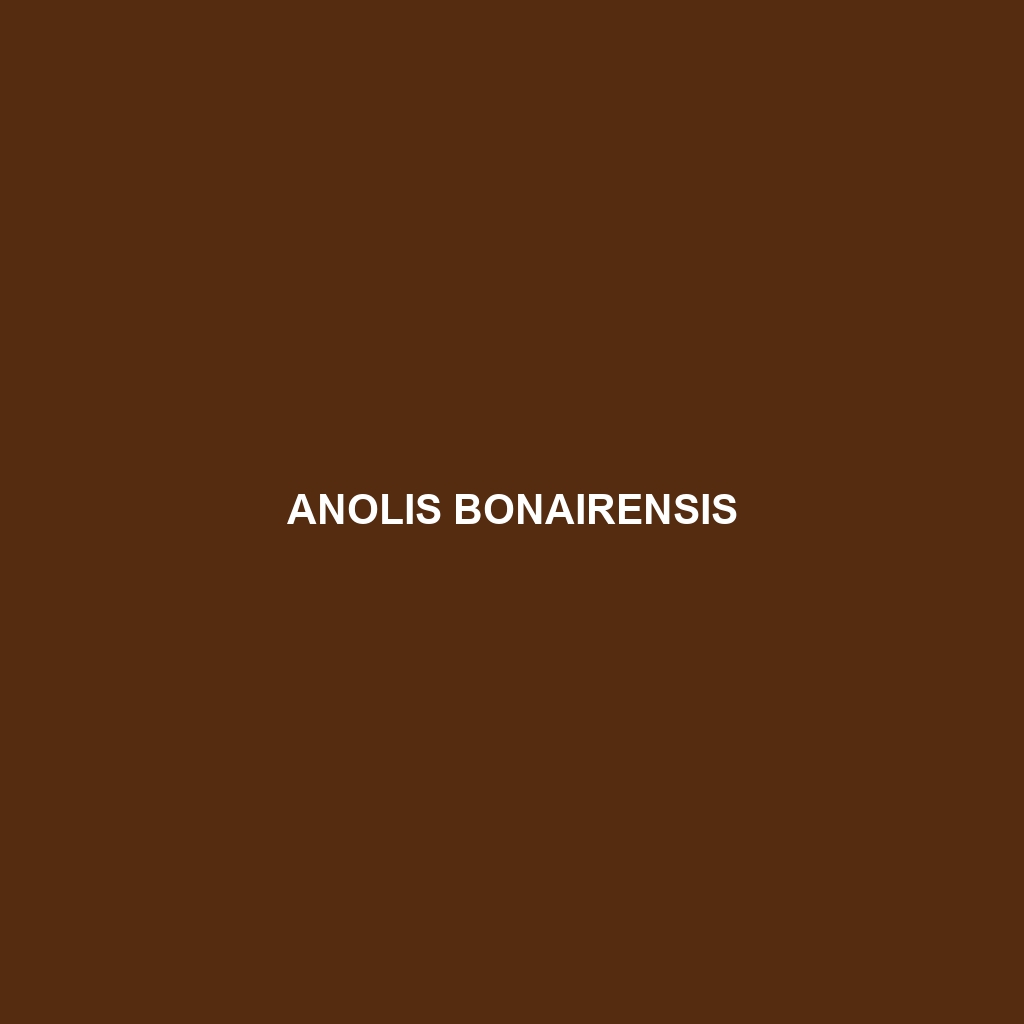Anolis bonairensis: A Comprehensive Species Description
Common Name: Anolis bonairensis
Scientific Name: Anolis bonairensis
Habitat
Anolis bonairensis, commonly known as the Bonaire Anole, is primarily found on the island of Bonaire in the Caribbean. This species thrives in a range of environments, including dry forests, shrublands, and coastal areas. Its preference for warm, sunny habitats allows it to bask on rocks, trees, and shrubs, making it well-suited to the island’s tropical climate.
Physical Characteristics
The Bonaire Anole is a small to medium-sized lizard, typically measuring around 10 to 15 cm in total length. Its coloration varies but generally includes vibrant greens and browns, enabling effective camouflage in its natural habitat. One of its most distinctive features is the dewlap—a flap of skin under the chin—that is often brightly colored and expands during mating displays. The Anolis bonairensis possesses a slender body shape with a long tail, contributing to its agile movement in trees and shrubs.
Behavior
Anolis bonairensis exhibits territorial behavior, with males actively defending their space from rivals. This species is diurnal, meaning it is most active during the day. They are adept climbers, often seen perched on vegetation where they can easily hunt for prey and avoid predators. Social interactions include elaborate displays utilizing their colorful dewlaps during mating rituals and territorial encounters.
Diet
The diet of Anolis bonairensis primarily consists of insects and small arthropods. Common food sources include crickets, beetles, and spiders. This lizard plays a crucial role in controlling insect populations, making it an important component of its ecosystem. The Bonaire Anole has adapted to foraging by actively hunting in the foliage and occasionally engaging in sit-and-wait predation.
Reproduction
Breeding for Anolis bonairensis typically occurs during the warmer months, with males performing elaborate courtship displays to attract females. After mating, the female lays one to two eggs in hidden locations such as under leaf litter or in crevices. The incubation period is approximately 6 to 8 weeks, after which the young hatch, ready to begin their lives independently.
Conservation Status
The conservation status of Anolis bonairensis is currently listed as ‘Least Concern’ by the IUCN, though habitat loss due to development and tourism remains a potential threat. Continuous monitoring of its population is essential to ensure that this species does not face increased risks in the future.
Interesting Facts
Anolis bonairensis is known for its remarkable ability to change color slightly based on its environment and its mood. This ability not only aids in camouflage but also plays a role in social interactions among individuals. Additionally, they are often a popular subject for studies on evolutionary biology and behavioral ecology due to their varied adaptations.
Role in Ecosystem
Anolis bonairensis functions as both predator and prey within its ecosystem. It helps regulate insect populations while serving as a food source for various birds and larger reptiles. Its presence indicates a healthy environment, as it thrives in well-balanced ecosystems where it interacts with other species, contributing to the biodiversity of the region.
